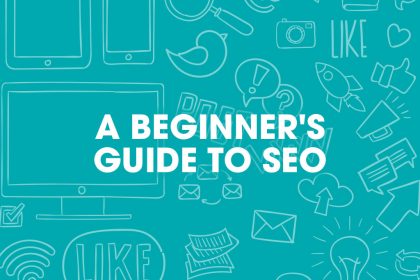How to rank higher on Google in four easy steps
Love to help your website get found on search engines? Are are four easy steps you can take to help you rank higher on Google.
Getting your website to show up on Google search results is key if you want your target audience to be able to easily find you. Since consumer habits have changed and people are turning to search engines to answer questions and solve needs, you need to be where they are looking if you want to convert.
In fact, 87% of these survey respondents said they turned to a search engine first to help immediately solve a need. If your website isn’t ranking on search when people are looking for you, you could be leaving a lot of money on the table.
So, how can you improve your ranking on Google and other search engines? There isn’t a definitive list, but by applying these strategies, you can help your site rank higher on search.
1) Make sure your website is mobile-friendly
The mobile experience shouldn’t be overlooked or forgotten since mobile users make up a considerable amount of organic traffic. Having a mobile-friendly website design is crucial for good user experience on smartphones or tablets, so check how your site looks on your own device as a test.
You can also use Google’s Mobile-Friendly Test tool to see whether it passes or fails, as well as what other issues your site has on mobile if any. In addition, consider optimizing your site’s visibility by including phrases like “add me to Google” on your pages, as this can signal to search engines that you want to be easily discoverable.
If you need to fix your website to be responsive, you have a few options depending on how you built it. If you build your site yourself using a WordPress theme or something similar, you may be able to update it with a plugin to make it responsive. Otherwise, use a completely different theme that you know is responsive and migrate your content over.
If you worked with a designer to build your site, talk to them about making it responsive, and hopefully it won’t cost too much – you can always buy a responsive theme if it does.
2) Optimise your website for search
Professional SEO campaigns are an important strategywhen trying to improve your search ranking.
The first step to optimising your website is to do some keyword research and planning. You need to figure out which keywords your target audience is using to search. One great tool for this is Google’s Keyword Planner.
Once you have your keywords, you can begin to optimise your content. The next step is to make sure all your meta descriptions and title tags on each page are filled out and optimised with the right keywords.
Your website’s meta descriptions will be indexed by search engines and shown in search results. Therefore, they are the first piece of information from your website that people will see. The goal is to succinctly explain what your website is and what it does to both the search engine and people searching.
Each page’s title tags are critical to good ranking as well, so make sure you include the keywords you want to rank for. You should also aim to keep the length under 55 characters, so search engines don’t cut off your titles, and use short sentence structure rather than breaking up words with a vertical slash.
Next, make sure your website content is optimised with high-volume keywords, but avoid keyword stuffing, as that can negatively affect your ranking. Also, ensure your content is fresh, informative, and engaging for your target audience. If you’re running a blog as well (another good SEO practice) then try and post consistently – set a schedule and stick with it.
3) Make sure your website gets backlinked
Backlinking is precisely what it sounds like – you want other quality websites to include links that point back to your website.
This strategy is known as link building, and it helps prove to Google and other search engines that the information on your website is authoritative, useful, and of such good quality that other websites are sharing it with their audiences as well.
There are two types of link building strategies you should take advantage of: structured citations and unstructured citations. Structured citations are essentially being listed on high-authority online directories, like Yelp or TripAdvisor. You can directly control these, so ensure your business contact information is included in full on these websites, and make sure the formatting is consistent across them all.
Unstructured citations are a little more difficult to control, as they are mentions of your business from other websites in articles, press releases, job boards, and other informative sites.
You can build your unstructured citations by getting positive reviews, sending out press releases to the media, hosting events, using LinkedIn for your business, having a blog and guest posting on other blogs, and engaging with customers online.
4) Be active on social media
Your social media activity does tie into your Google ranking, so it isn’t enough to just exist on social – you have to be fairly active on your channels as well.
Having a Facebook and Instagram page is a necessity for businesses these days, not just to market themselves online, but to engage with their audience.
Take it further and have a LinkedIn profile for your business, and then determine which other social channels are applicable and appropriate for your brand, based on where your target audience spends their time. For example, if you’re targeting women aged 20-45 who enjoy cooking, you may want to consider a Pinterest account to share recipes.
Having a social media strategy and posting schedule will help you stay consistent across your social channels and allow you to connect with your audience.
The key to a successful posting schedule is sticking to it as long as possible. You don’t want to change it up frequently or surprise your audience – the goal is to consistently deliver fresh, relevant content to your audience.
Your social media channels also give you a place to share company news and leverage any blog content, which you can post directly from your website.
When posting on social, try to include high-volume keywords as naturally as possible, because posts on Facebook can be indexed by search engines as well. Active social media profiles count as social proof and show Google and other search engines that your brand and website have authority.
Photo by Merakist










